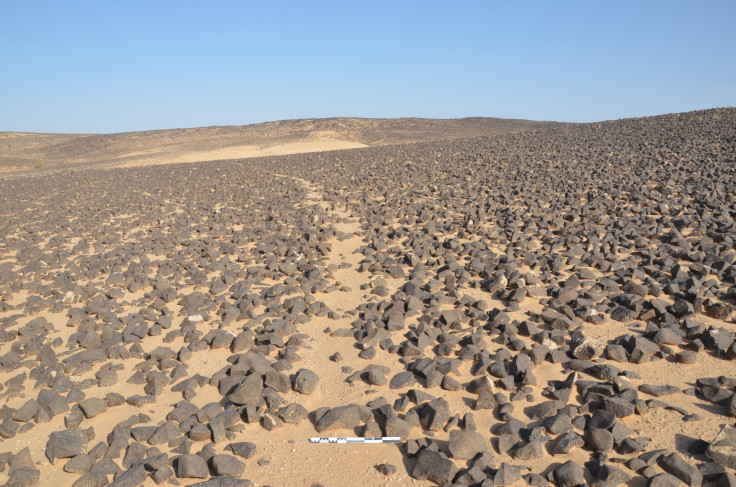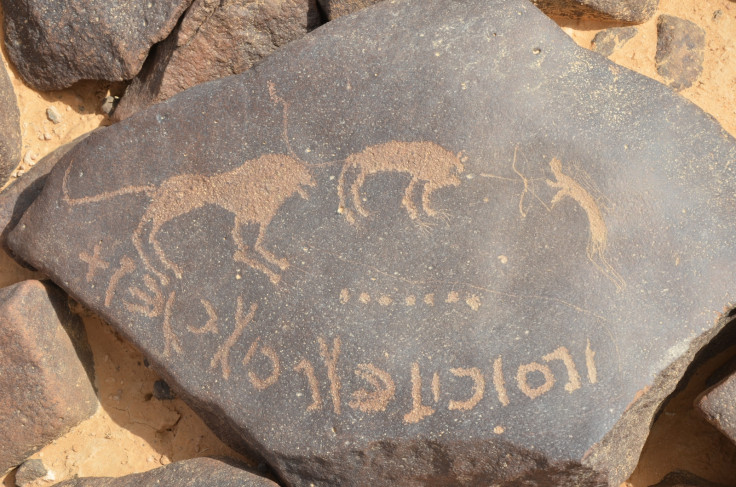Mysterious ancient rock art unearthed in Jordan's Black Desert
The inscriptions tell the story of how life flourished in the desert 2,000 years ago.
Archaeologists working in the Jebel Qurma region of Jordan's Black Desert have uncovered more than 5,000 pieces of rock art over the last five years. They have identified elaborate inscriptions in Safaitic, an ancient script and dialect used in southern Syria and northern Jordan thousands of years ago, alongside depictions of animals.
All these artworks are recorded and documented as part of a project known as the Jebel Qurma Archaeological Landscape Project, which started in 2012. The team, led by Peter Akkermans from Leiden University in the Netherlands, aims to investigate the very rich archaeological heritage of Jordan's arid black basalt desert. An update on their rock art findings has recently been published in The American Journal of Archaeology.
Although it is not the first time that archaeologists work in the area, projects had up to now been limited in their scope and in their scale. Some archaeological studies were conducted in the 1980's, but it is only recently that there has been a renewed interest in Jordan's Black Desert.

"Until today there had only been small scale projects focused on short, specific moment of prehistory. Our project is much larger in scale, and we are looking at a much larger time-frame. We are interested in recording sites and archaeological artefacts from the very earliest evidence, hundred thousands of years ago, up to very recent Bedouin settlements," Akkermans told IBTimes UK.
With his team he interprets the rock art in historical context, looking at the inscriptions in relations to one another and in relation to their environment, over a long period of time.
The story of life in the desert
It is difficult today to imagine how ancient populations may have one day lived in the desert when you look at current climate conditions – the very harsh, arid weather makes it extremely difficult for humans to survive.

Yet, the rock art tells the story of life thriving in the desert thousands of years ago with more animal diversity than today. "Based on the inscriptions on the rocks, we can say that the people who made the inscriptions may have evolved in some kind of pasture, raising sheep, goats and camels. They also represent a great diversity of animals which also seem to indicate different environmental conditions – greener and wetter. Still it would not have been a forest," Akkermans says.
What the rocks say
Investigations to date the rocks more precisely are still ongoing. Based on other excavations nearby, the team estimates that the artworks date back to some 2,000 years ago, sometime between the third century BCE and the first century CE.
"Some of the rock art that had already been found in the 19th and 20<sup>th century had been deciphered, but there was not massive interest in dating them and in replacing the inscriptions in historical context, so that dating was purely conjectural," Akkermans explains.

Beyond their efforts to date the rocks, the team also works to systematically document all the rock art they come across, GPS-recording all of it. This will allow them to know where every piece is and give them an opportunity to explain why the rock art is where it is.
But the most important question – which so far remains a mystery – is the purpose of these artworks and why they were created in the first place. "Even more than the content of the inscriptions perhaps, we want to understand what the aim of these people was. It has been said that the rock art is just a form of graffiti, but we believe there is a deeper meaning. We want to uncover who wrote these inscriptions, how they learnt to write them and to whom they addressed them to," Akkermans concludes.
© Copyright IBTimes 2025. All rights reserved.






















